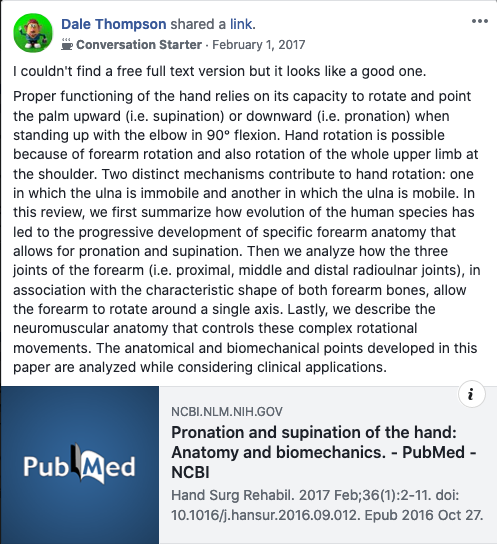Pronation and supination of the hand: Anatomy and biomechanics. Proper functioning of the hand relies on its capacity to rotate and point the palm upward (i.e. supination) or downward (i.e. pronation) when standing up with the elbow in 90° flexion. Hand rotation is possible because of forearm rotation and also rotation of the whole upper limb at the shoulder. Two distinct mechanisms contribute to hand rotation: one in which the ulna is immobile and another in which the ulna is mobile. In this review, we first summarize how evolution of the human species has led to the progressive development of specific forearm anatomy that allows for pronation and supination. Then we analyze how the three joints of the forearm (i.e. proximal, middle and distal radioulnar joints), in association with the characteristic shape of both forearm bones, allow the forearm to rotate around a single axis. Lastly, we describe the neuromuscular anatomy that controls these complex rotational movements. The anatomical and biomechanical points developed in this paper are analyzed while considering clinical applications.

#science #chiropractor #chiropractic #research #education #evidence based #patient centered #interprofessional #collaborative #rehabilitation #public health #spinal health #musculoskeletal health #ethics #pain #function #disability #QOL #knowledgetranslation


